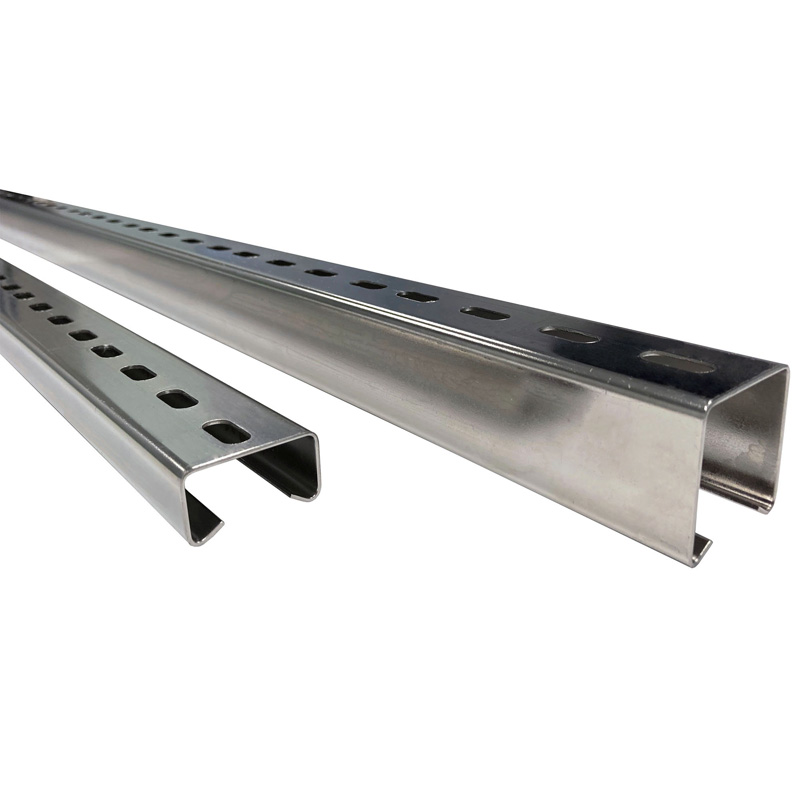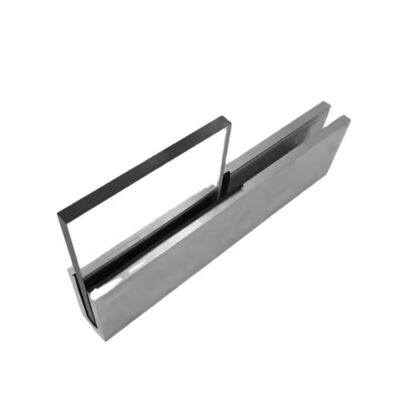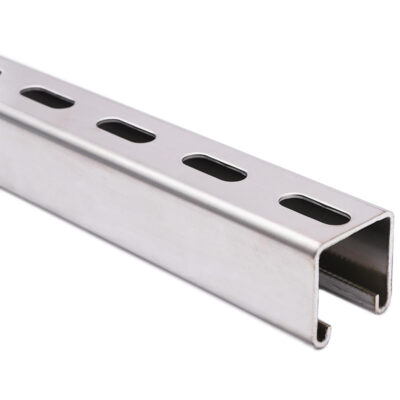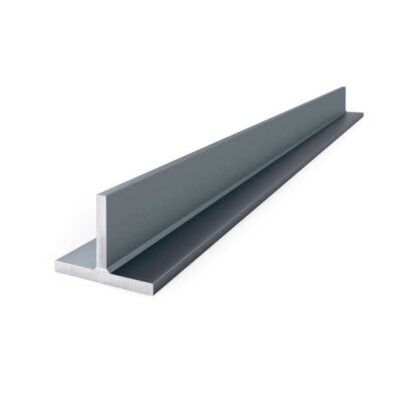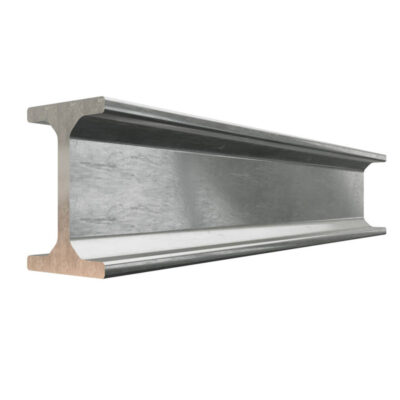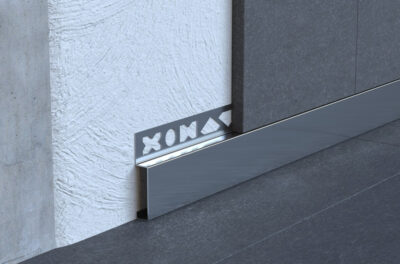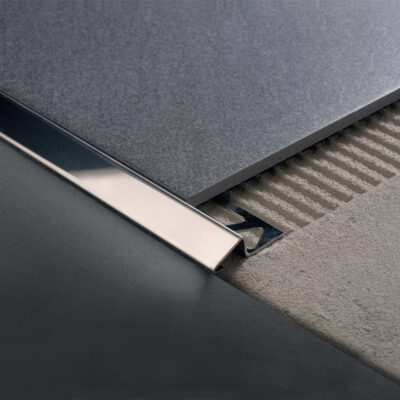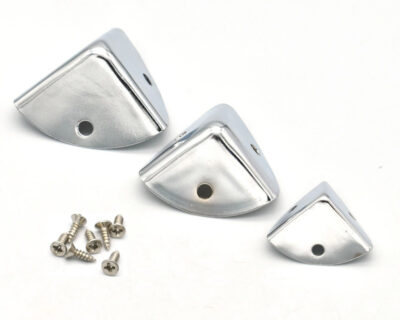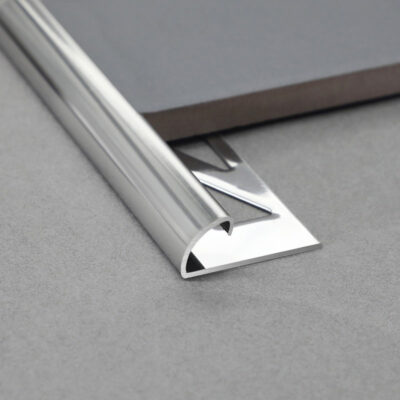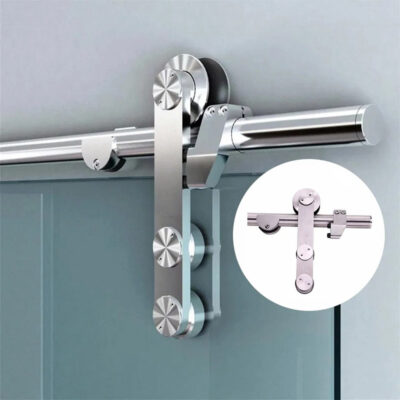Introduction to Stainless Steel Channel Sections
The first time I encountered a structural failure due to improper material selection, I was consulting on a coastal construction project. The developer had used standard carbon steel channels for a supporting framework, and within months, rust had compromised the entire structure. This eye-opening experience forever changed my approach to material selection, particularly when it comes to metal profiles used in demanding environments.
Stainless steel channel sections represent one of the most versatile structural elements in modern construction and manufacturing. These U-shaped profiles combine remarkable strength with superior corrosion resistance, making them indispensable in applications ranging from architectural facades to heavy industrial equipment. Unlike their carbon steel counterparts, stainless channel sections maintain their integrity even when exposed to moisture, chemicals, and extreme temperatures.
What exactly makes these components so valuable? At their core, stainless steel channels consist of a flat base (the web) with two perpendicular legs (the flanges), forming either a C or U profile. This seemingly simple geometry creates a remarkably efficient load-bearing structure that maximizes strength while minimizing material usage. The addition of chromium—typically at least 10.5%—in the steel alloy forms a self-healing protective oxide layer that gives stainless steel its signature corrosion resistance.
The evolution of stainless steel channel sections traces back to the early 20th century, paralleling advancements in metallurgical science. Early profiles were limited in size and application, but modern manufacturing technologies have expanded the range dramatically. Today, engineers and architects can choose from an extensive catalog of sizes, thicknesses, and alloy compositions to meet specific project requirements.
According to E-Sang, a leading supplier in the metal fabrication industry, the demand for specialized stainless channel sections has grown substantially in recent years, particularly in sectors where durability and longevity justify the higher initial investment.
Types and Classifications of Stainless Steel Channel Sections
When I recently visited a major fabrication facility in Pittsburgh, I was struck by the sheer variety of channel profiles being produced. What appeared at first glance to be similar products actually represented dozens of distinct specifications, each designed for particular loading conditions and environmental exposures.
Stainless steel channel sections generally fall into two primary profile categories: C-channels and U-channels. C-channels feature flanges with a slight inward angle, creating a subtle lip that enhances rigidity and provides additional surface area for connections. U-channels, in contrast, have flanges that extend perpendicular to the web, forming a true U-shape that excels in applications requiring uniform loading across the profile.
The material composition represents another crucial classification factor. The most common grades include:
- Type 304 (18% chromium, 8% nickel): The workhorse of the industry, offering excellent corrosion resistance for most non-marine applications
- Type 316 (16% chromium, 10% nickel, 2% molybdenum): Premium grade with enhanced resistance to chlorides, making it ideal for marine and chemical processing environments
- Type 430 (16-18% chromium): A more economical ferritic stainless steel with moderate corrosion resistance, suitable for interior applications
- Duplex grades (21-24% chromium, 3-6% nickel): Hybrid microstructures that combine exceptional strength with corrosion resistance for specialized applications
Manufacturing methods further distinguish channel section types. Hot-rolled channels are produced by passing heated steel billets through shaped rollers, creating profiles with slightly rounded corners and relatively thick minimums. Cold-formed channels, manufactured by bending stainless steel sheet at room temperature, feature sharper corners and can be produced in lighter gauges, though with some sacrifice in internal stress distribution.
Beyond these fundamental classifications, specialized variants include:
- Bar channels: Smaller, precision-manufactured sections often used in machinery and equipment
- Architectural channels: Featuring customized dimensions and enhanced surface finishes for visible applications
- Slotted channels: Incorporating regularly spaced openings for flexible attachment options
- Tapered channels: With varying web heights to accommodate specific loading patterns
The dimensional range available is equally impressive, with web heights typically ranging from 0.5 inches (12.7mm) to over 12 inches (305mm) and flange widths from 0.25 inches (6.35mm) to 4 inches (101.6mm). Web thicknesses commonly range from 0.059 inches (1.5mm) to 0.5 inches (12.7mm), depending on the application requirements.
Technical Specifications and Properties of Stainless Channels
The afternoon I spent testing various channel sections in a metallurgical laboratory revealed something fascinating: despite their superficial similarities, different stainless steel channels exhibited remarkably distinct performance characteristics. These differences stem from a complex interplay of chemical composition, manufacturing process, and geometric design.
The dimensional characteristics of stainless steel channel sections follow standardized systems that ensure consistency across the industry. In North America, the American Iron and Steel Institute (AISI) designations prevail, while European markets typically adhere to EN 10088 standards. These specifications define critical dimensions including:
- Web height (h): The vertical measurement of the channel’s back
- Flange width (b): The horizontal measurement of the protruding legs
- Web thickness (tw): The material thickness of the back portion
- Flange thickness (tf): The material thickness of the legs
- Inner radius (r): The curve measurement at interior corners
- Outer radius (R): The curve measurement at exterior corners
Understanding the mechanical properties of these profiles is essential for proper application. Key parameters include:
| Property | 304 Stainless | 316 Stainless | 430 Stainless | Duplex 2205 |
|---|---|---|---|---|
| Tensile Strength (MPa) | 515-620 | 485-620 | 450-600 | 655-840 |
| Yield Strength (MPa) | 205-310 | 170-310 | 205-310 | 450-550 |
| Elongation (%) | 40-60 | 40-60 | 22-30 | 25-30 |
| Hardness (Brinell) | 160-190 | 160-190 | 160-180 | 270-290 |
| Elastic Modulus (GPa) | 193-200 | 193-200 | 200-205 | 200 |
Dr. Elena Mikhailova, a materials scientist I consulted at Carnegie Mellon University, explained that “the austenitic structure of 304 and 316 stainless steels provides an exceptional combination of formability and corrosion resistance, making them ideal for complex channel geometries exposed to challenging environments.” She notes that the duplex grades, though less common in standard channel sections, offer “nearly twice the yield strength of austenitic grades, enabling significant weight reduction in high-load applications.”
Corrosion resistance—arguably the defining characteristic of stainless steel channels—varies significantly between grades. In accelerated salt spray testing (ASTM B117), Type 316 channels typically show no significant corrosion after 1,000+ hours of exposure, while Type 304 begins to exhibit minor surface corrosion around 500-700 hours. In contrast, carbon steel channels typically show severe corrosion within 24-48 hours under identical conditions.
The section modulus and moment of inertia—key parameters for structural applications—depend on both material properties and geometric configuration. For example, a typical 4-inch stainless steel C-channel with 1.58-inch flanges might have a section modulus of approximately 1.5 in³ and a moment of inertia around 3.0 in⁴, though these values vary with thickness and exact dimensions.
Weight is another important consideration. Stainless steel’s density (approximately 8.0 g/cm³) exceeds that of carbon steel (7.85 g/cm³) and aluminum (2.7 g/cm³), resulting in heavier sections. However, this weight difference is often offset by stainless steel’s higher strength and corrosion resistance, which frequently allow for thinner sections and extended service life.
Applications Across Industries
During my tenure as a materials consultant, I’ve observed stainless steel channel sections performing admirably in environments where other materials rapidly deteriorate. Last year, I inspected a food processing facility that had installed stainless channels as equipment supports fifteen years earlier—they looked virtually identical to the day they were installed, despite constant exposure to cleaning chemicals and moisture.
The construction and architectural sector represents one of the largest markets for stainless steel channel sections. These profiles find application in:
- Curtain wall systems for high-rise buildings
- Supporting frameworks for glass facades
- Interior and exterior railings and balustrades
- Framing for architectural features and sunshades
- Drainage systems and threshold supports
- Elevator and escalator components
Within manufacturing and industrial equipment, stainless channels provide structural integrity in environments where hygiene and corrosion resistance are paramount:
- Conveyor systems for food, pharmaceutical, and chemical processing
- Equipment frames in wash-down environments
- Storage rack systems for corrosive materials
- Support structures in water and wastewater treatment facilities
- Components in medical and laboratory equipment
The chemical processing industry relies heavily on stainless channel sections for:
- Pipe supports and valve stands
- Access platforms and walkways
- Equipment skids and frames
- Structural supports in containment areas
- Chemical storage tank reinforcement
Marine and offshore applications demonstrate perhaps the most demanding use cases:
| Application | Environment | Typical Grade | Key Considerations |
|---|---|---|---|
| Ship superstructures | Salt spray, mechanical stress | 316L | Weld quality, fatigue resistance |
| Offshore platform components | Immersion, chlorides, impact | Duplex 2205 | Strength-to-weight ratio, crevice corrosion |
| Marina infrastructure | Tidal zone, biological growth | 316L | Galvanic isolation, maintenance access |
| Dock equipment | Splash zone, abrasion | 316L | Impact resistance, safety factors |
Transportation infrastructure represents another significant application area. Highway sound barriers, pedestrian bridges, and transit station components increasingly utilize stainless steel channels for their combination of structural performance and minimal maintenance requirements.
In solar energy installations, stainless channel sections provide mounting frameworks for photovoltaic panels, particularly in coastal or industrial areas where atmospheric corrosion threatens conventional steel structures. The long lifespan of stainless steel aligns well with the 25+ year design life of modern solar installations.
The medical industry employs specialized stainless channel sections in equipment mounting systems, surgical room infrastructure, and laboratory facilities. Here, the material’s compatibility with stringent cleaning protocols and resistance to disinfectants prove essential.
Food processing facilities represent perhaps the most exacting environment for structural components. Stainless steel channel sections withstand the daily high-pressure wash-downs with caustic cleaning agents that would quickly degrade other materials. I’ve personally witnessed carbon steel supports in dairy processing plants requiring replacement within 2-3 years, while adjacent stainless sections remain serviceable after decades.
Selection Criteria and Design Considerations
The most expensive mistake I ever witnessed in my career involved a pharmaceutical manufacturer who selected standard 304 stainless channels for a production line, only to discover that the specific cleaning agents used in their process caused unexpected stress corrosion cracking. The entire framework needed replacement with 316L grade within eight months—an expensive lesson in thorough environmental assessment.
Selecting the appropriate stainless steel channel section involves balancing multiple factors, beginning with a comprehensive analysis of environmental conditions:
- Temperature range and cycling
- Exposure to specific chemicals or concentrations
- Oxygen availability (particularly in crevices)
- Presence of dissimilar metals (galvanic concerns)
- Abrasion or erosion factors
- UV exposure for exterior applications
- Cleaning protocols and frequency
Load-bearing requirements constitute another critical consideration. Engineers must calculate:
- Dead loads (permanent weight)
- Live loads (variable or moving forces)
- Dynamic loading (vibration, impact)
- Directional stresses (compression, tension, torsion)
- Cyclical loading patterns
- Safety factors appropriate to the application
Professor Rahul Jain, a structural engineering expert I consulted at Georgia Tech, emphasizes that “the temptation to overdesign stainless steel structures due to material cost concerns often leads to inefficient use of resources. Precise load calculation and appropriate grade selection typically yield the most economical long-term solution.”
Economic factors inevitably influence selection decisions. While initial material cost represents the most obvious consideration, a thorough life-cycle cost analysis should include:
- Installation labor differences between materials
- Maintenance requirements over projected lifespan
- Downtime costs associated with repairs or replacement
- End-of-life salvage value (significantly higher for stainless)
- Risk assessment for potential failure consequences
Compatibility with other building systems merits careful attention. Key considerations include:
- Thermal expansion coefficients (approximately 17.3 × 10⁻⁶/°C for austenitic stainless)
- Electrical conductivity implications for grounding systems
- Magnetic permeability concerns for sensitive equipment
- Aesthetic compatibility with adjacent materials
- Acoustic properties in noise-sensitive applications
Regulatory compliance adds another layer to the selection process. Depending on the application, stainless steel channel sections may need to meet:
- Building code structural requirements
- Food safety regulations (FDA, USDA, or equivalent)
- Fire resistance ratings
- Environmental impact assessments
- Specific industry standards (ASME, AWS, etc.)
The selection matrix below provides a simplified framework for initial grade selection based on environmental factors:
| Environment | Recommended Grade | Alternative | Special Considerations |
|---|---|---|---|
| Indoor, conditioned space | 304/304L | 430 | Primarily aesthetic applications |
| Wet interior, non-chloride | 304/304L | 316/316L | Crevice inspection important |
| Wet interior with chlorides | 316/316L | Duplex | Concentration levels critical |
| Coastal exterior | 316/316L | Duplex | Distance from shore, prevailing winds |
| Chemical processing | Alloy-specific | 316L | Process chemical compatibility |
| Food processing | 304/304L | 316L | Cleaning agent verification |
| High-temperature | 321, 347 | 309, 310 | Oxidation and creep analysis |
Installation and Fabrication Techniques
I still recall watching a contractor attempt to cut stainless steel channels with the same abrasive discs used for carbon steel. Not only did they waste countless blades, but the excessive heat generated compromised the material’s corrosion resistance along the cut edges. This common misstep highlights the specialized knowledge required for proper stainless steel fabrication.
Cutting stainless steel channel sections demands techniques that minimize heat generation and prevent material contamination. Optimal methods include:
- Cold sawing with appropriate blade types and cutting fluids
- Plasma cutting with clean, dry air and proper speed settings
- Laser cutting for precision applications and thinner sections
- Water jet cutting for heat-sensitive requirements
- Shearing for straight cuts on thinner materials
Machining operations require similar considerations, with reduced speeds, increased feeds, and appropriate cooling compared to carbon steel processing. Tool selection proves critical, with cobalt-containing high-speed steel (HSS) or carbide tools generally providing the best results for drilling and milling operations.
Joining stainless steel channel sections presents unique challenges and opportunities. Welding remains the most common method, with these key considerations:
- Process selection (TIG/GTAW preferred for critical applications)
- Proper filler metal matching (typically one grade higher in nickel content)
- Thorough cleaning before and after welding
- Appropriate heat input management to prevent sensitization
- Post-weld cleaning and passivation to restore corrosion resistance
Mechanical fastening offers advantages in certain applications, particularly where future disassembly may be required. Important factors include:
- Using compatible stainless fasteners (typically matching or noble to the channel material)
- Appropriate torque specifications (stainless exhibits different friction characteristics)
- Prevention of galling through suitable lubricants or coatings
- Consideration of crevice corrosion potential at interfaces
- Gasket compatibility for sealed connections
Surface finishing can significantly impact both aesthetics and performance. Common finishing operations include:
- Mechanical polishing to various grit levels
- Electropolishing for enhanced corrosion resistance
- Passivation to maximize chromium oxide layer formation
- Bead blasting for uniform matte appearance
- Specialized coatings for extreme environments
During a hospital renovation project I consulted on, the installation team faced significant challenges integrating stainless channel supports within existing construction. The solution involved custom fabrication of transition pieces that accommodated both the structural requirements and the irregular existing conditions—a reminder that field adaptability often proves as important as precise specification.
Handling and storage requirements differ significantly from carbon steel practices. Best practices include:
- Storing stainless channels separated from carbon steel materials
- Using non-metallic or stainless steel slings and fixtures
- Preventing contact with chloride-containing materials
- Protecting finished surfaces with appropriate coverings
- Maintaining clear material identification throughout the process
The fabrication environment itself deserves careful consideration. Dedicated tools and segregated work areas for stainless steel significantly reduce cross-contamination risks. Even airborne particles from carbon steel grinding in adjacent areas can embed in stainless surfaces, creating corrosion initiation sites.
Maintenance and Longevity
The first stainless steel channel sections I ever specified were for a coastal boardwalk project in Florida. Twenty-three years later, I returned to find them still in service, with only minimal surface cleaning required over their lifetime. This experience underscores the exceptional longevity these materials offer when properly selected and maintained.
Despite their inherent corrosion resistance, stainless steel channel sections benefit from appropriate maintenance protocols. Cleaning requirements vary by environment and surface finish:
- For architectural applications with high visibility, regular cleaning with mild detergent and water maintains appearance
- In food processing environments, standard sanitizing procedures typically suffice for both hygiene and material maintenance
- Marine exposures benefit from periodic freshwater rinsing to remove chloride deposits
- Industrial environments may require specialized cleaning agents compatible with both process requirements and material preservation
The frequency of inspection should correlate with environmental severity. While indoor, climate-controlled applications might warrant only annual visual assessment, coastal or chemical exposure situations benefit from quarterly examination for early detection of localized corrosion.
When cleaning stainless steel channels, there are several critical practices to avoid:
- Chloride-containing cleaners (including many household bleaches)
- Steel wool or carbon steel brushes that can embed particles
- Aggressive abrasives that damage the passive layer
- Acid solutions unless specifically formulated for stainless passivation
During renovation work on a 30-year-old chemical processing facility, I observed that the stainless steel structural channels in areas with proper maintenance protocols remained serviceable, while those in poorly maintained sections showed significant deterioration. The difference wasn’t in the material or environment, but entirely in the adherence to appropriate care procedures.
Galvanic corrosion presents a particular concern when stainless steel channels contact dissimilar metals. Standard prevention methods include:
- Isolation using non-conductive washers, gaskets, or coatings
- Selection of compatible metals within 0.25V potential difference
- Ensuring larger cathode-to-anode ratios when dissimilar metals must be used
- Application of appropriate sealants at interfaces
- Designing for drainage to prevent electrolyte accumulation
The life expectancy of stainless steel channel sections varies dramatically based on material grade and environment, but generally exceeds alternative materials significantly:
| Environment | 304/304L Life Expectancy | 316/316L Life Expectancy | Carbon Steel (Coated) Life Expectancy |
|---|---|---|---|
| Interior, conditioned | 50+ years | 50+ years | 15-25 years |
| Industrial atmosphere | 20-30 years | 30-40+ years | 5-10 years |
| Urban/suburban exterior | 30-40+ years | 40-50+ years | 8-15 years |
| Coastal, >1 mile from shore | 15-25 years | 30-40+ years | 3-8 years |
| Coastal, <1 mile from shore | 8-15 years | 20-30 years | 2-5 years |
| Direct seawater splash | Not recommended | 15-25 years | 1-3 years |
Note: These figures represent general estimates; actual performance varies based on specific conditions, design details, and maintenance practices.
From a sustainability perspective, stainless steel channel sections offer significant advantages. The extended service life reduces replacement frequency and associated environmental impacts. Furthermore, stainless steel’s high recycling value and 100% recyclability create a closed-loop material system with minimal waste. Most stainless steel products contain approximately 60% recycled content, further enhancing their environmental credentials.
Future Trends in Stainless Steel Channel Sections
When I attended the International Materials Exhibition in Milan last fall, the innovations in stainless steel channel section technology surprised even a veteran like me. The industry is evolving rapidly, with developments poised to expand applications while addressing traditional limitations.
Advanced manufacturing technologies are transforming production capabilities for stainless steel channel sections. Emerging processes include:
- Laser fusion manufacturing for custom profiles with minimal tooling costs
- Flow forming techniques that enhance mechanical properties while reducing material usage
- Hybrid manufacturing methods combining additive and subtractive processes
- Continuous casting innovations for improved dimensional consistency
- Advanced cold-forming technologies enabling complex geometries with tight tolerances
The development of new alloy variants presents perhaps the most exciting frontier. Recent metallurgical innovations include:
- Lean duplex grades (reduced nickel content with maintained properties)
- High-nitrogen stainless steels with enhanced strength and corrosion resistance
- Precipitation-hardened variants offering exceptional strength-to-weight ratios
- Custom alloys optimized for specific corrosive environments
- Carbon-reduced grades with improved weldability and intergranular corrosion resistance
Dr. Marcus Chen, a metallurgist whose research I’ve followed closely, has developed a promising nitrogen-enhanced duplex stainless steel that “maintains corrosion resistance comparable to 316L but with nearly double the yield strength, enabling significant weight reduction in structural applications.” Such innovations could dramatically expand the competitive positioning of stainless channel sections against alternative materials.
Sustainability considerations increasingly influence material selection decisions. Stainless steel’s inherent durability aligns well with lifecycle assessment methodologies that evaluate environmental impact beyond initial production. Industry initiatives focus on:
- Reduced energy consumption in manufacturing processes
- Lower-impact mining and processing technologies
- Enhanced recycling systems and identification methods
- Carbon footprint reduction throughout the supply chain
- Development of environmental product declarations (EPDs) for specific products
Digital design and simulation tools continue advancing, enabling more precise specification and optimization of stainless steel channel sections. Contemporary capabilities include:
- Finite element analysis for complex loading scenarios
- Corrosion prediction modeling based on environmental parameters
- Weight optimization algorithms balancing material usage and performance
- Building Information Modeling (BIM) integration for streamlined specification
- Virtual reality visualization for complex assembly planning
The integration of stainless steel channels with other advanced materials presents intriguing possibilities. Examples include:
- Composite-reinforced stainless channels for enhanced stiffness
- Integrated carbon fiber elements for optimized performance
- Ceramic-coated channels for extreme temperature applications
- Biomimetic surface treatments for specific functional properties
- Smart material additions enabling monitoring capabilities
I recently toured a prototype facility developing self-monitoring stainless steel structural elements. These innovative channels incorporate embedded sensors that detect stress patterns, corrosion initiation, or unusual loading—potentially revolutionizing structural health monitoring in critical applications.
Market analysts project continued growth in stainless steel channel section usage, particularly in infrastructure applications requiring long-term performance with minimal maintenance. The increasing focus on total lifecycle costs rather than initial investment enhances the competitive position of these premium materials.
Conclusion and Selection Recommendations
Throughout my career specifying materials for challenging environments, I’ve developed a profound appreciation for stainless steel channel sections. Their remarkable combination of structural performance, corrosion resistance, and aesthetic appeal makes them unmatched for demanding applications. That said, they’re not the universal solution for every situation—their optimal use requires thoughtful analysis of requirements and constraints.
For projects where initial cost represents the primary consideration, traditional carbon steel channels with appropriate protective coatings may prove more economical, particularly in controlled interior environments with limited corrosion risk. However, when lifecycle costs, maintenance requirements, or critical performance needs enter the equation, stainless steel channels frequently emerge as the superior option.
The selection process should begin with a thorough environmental assessment, identifying all potential corrosion mechanisms and stressors. Temperature extremes, chemical exposures, cleaning protocols, and atmospheric conditions all influence grade selection. While 304/304L satisfies most general applications, environments involving chlorides, certain acids, or elevated temperatures typically warrant upgrading to 316/316L or specialty grades.
Structural requirements form the second critical analysis dimension. Load calculations, deflection limits, and connection details determine the appropriate channel dimensions and wall thicknesses. Computer modeling has significantly enhanced our ability to optimize these selections, often identifying opportunities to reduce material usage through precise specification.
Fabrication considerations shouldn’t be overlooked. Projects with complex forming requirements, extensive welding, or field modifications may benefit from austenitic grades (304, 316) with superior workability. Applications involving primarily mechanical fastening might successfully utilize the higher-strength but less formable duplex or precipitation-hardened grades.
Maintenance capabilities represent another crucial factor. Organizations with limited maintenance resources or facilities in remote locations benefit particularly from the reduced inspection and service requirements of properly specified stainless steel channels. The “install and forget” nature of these components proves especially valuable in difficult-access locations.
When evaluation extends beyond technical factors to include sustainability goals, stainless steel channel sections offer compelling advantages. Their exceptional durability, complete recyclability, and high recycled content align perfectly with circular economy principles and long-term environmental responsibility.
Based on my three decades of material specification experience, I’ve found stainless steel channel sections to be among the most reliable and problem-free components in properly designed systems. While they require higher initial investment than some alternatives, they consistently deliver superior performance where material integrity is critical to system function, safety, or longevity.
The ongoing evolution of manufacturing technologies and alloy development continues expanding the practical application range for these versatile components. What once represented a premium, specialized selection increasingly serves as the standard choice for quality-focused, lifecycle-oriented projects across diverse industries.
Ultimately, the decision to specify stainless steel channel sections should balance performance requirements, environmental conditions, economic considerations, and sustainability goals. When this analysis is conducted thoroughly, these remarkable components frequently prove not merely sufficient but optimal for demanding structural applications.
Frequently Asked Questions about Stainless Steel Channel Sections
Q: What are Stainless Steel Channel Sections, and how are they used?
A: Stainless Steel Channel Sections are structural components made from hot-rolled stainless steel, featuring a U-shape with defined radii on the corners. They are widely used in construction and fabrication projects, particularly where corrosion resistance is crucial, such as in marine environments or chemical processing. These channels provide structural support and are often preferred for their strength and aesthetic appeal.
Q: What are the key benefits of using Stainless Steel Channel Sections?
A: The primary benefits of using Stainless Steel Channel Sections include their corrosion resistance, which makes them suitable for environments exposed to moisture or chemicals. They also offer a sleek aesthetic and are easy to clean, making them ideal for high-hygiene environments. Additionally, stainless steel channels have a good strength-to-weight ratio and are resistant to heat, making them versatile in various applications.
Q: How do I choose the right type of Stainless Steel Channel Section for my project?
A: Choosing the right Stainless Steel Channel Section depends on the project’s requirements. Consider factors like the environment in which it will be used (e.g., marine, chemical, or food processing), the required strength and durability, and the aesthetic preference. Common types include 304 and 316 stainless steel grades, each with different levels of corrosion resistance and strength.
Q: Can Stainless Steel Channel Sections be customized in size and finish?
A: Yes, Stainless Steel Channel Sections can be customized in size and finish. Many suppliers offer bespoke sizes and various surface finishes, such as polished or bead-blasted. Additionally, channels can be cut, bent, or drilled to meet specific project needs. Laser fusion technology also allows for larger or complex configurations.
Q: What are some common applications of Stainless Steel Channel Sections?
A: Stainless Steel Channel Sections are commonly used in:
- Marine Environments: Due to their resistance to saltwater corrosion.
- Chemical Processing: For equipment exposed to corrosive substances.
- Food and Beverage Production: In facilities requiring high hygiene standards.
- Construction: As structural supports in buildings, particularly in environments where durability is essential.

